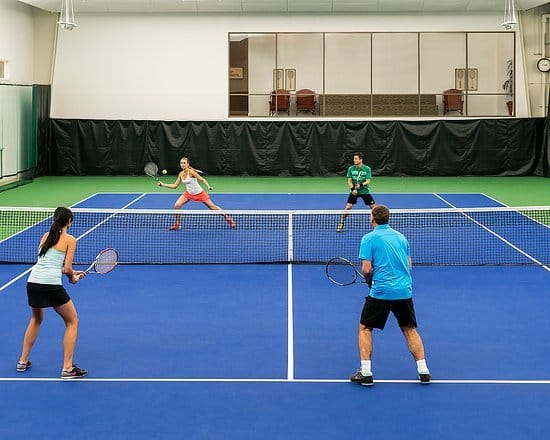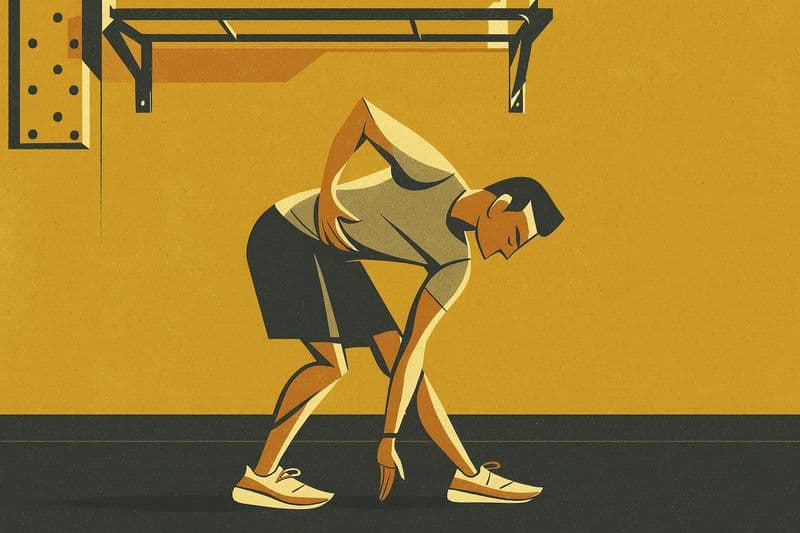
Introduction
Indoor and outdoor training offer unique benefits and challenges, and choosing the right one can significantly impact your fitness results.
Here’s what you need to know:
Indoor Training: Controlled environment, ideal for tracking progress and structured routines. Perfect for bad weather or rehabilitation.
Outdoor Training: Natural terrain and fresh air boost power output (11–70% more for cyclists) and engage more muscles. Great for variety and mental stimulation.
Cost: Indoor gyms often require memberships ($30–$200/month), while outdoor workouts are typically free.
Equipment: Indoors offers high-tech machines; outdoors relies on natural elements and basic setups.
Quick Comparison
Factor | Indoor Training | Outdoor Training |
|---|---|---|
Environment | Stable, weather-proof | Varied, depends on weather |
Performance | Lower power output | Higher power output |
Cost | Membership fees | Usually free |
Equipment | Advanced machines and tools | Basic stations, natural obstacles |
Mental Engagement | Focused but repetitive | Stimulating and dynamic |
For the best results, many athletes combine both approaches - structured indoor sessions for precision and outdoor workouts for variety and challenge.
Indoor vs Outdoor Exercise: Benefits and Differences
Differences in Environment
The physical setting you choose for training can greatly influence your experience and performance.
Indoor Settings
Training indoors gives you a controlled environment, free from weather-related disruptions. With stable temperature and ventilation, you can focus entirely on your workout. However, the lack of natural airflow may result in more sweating [1]. While the consistent conditions make it easier to track progress and stick to structured routines, the repetitive nature of indoor settings can sometimes feel mentally draining.
Outdoor Settings
Outdoor training provides a more dynamic experience. Fresh air, natural light, and varied terrain keep things engaging and add an extra layer of physical challenge. Studies suggest that outdoor sessions often yield better performance, thanks to natural airflow and the stimulating environment.
Comparison: Indoor vs Outdoor Settings
Environmental Factor | Indoor Training | Outdoor Training |
|---|---|---|
Climate Control | Stable temperature and humidity | Subject to weather changes |
Air Quality | Filtered, controlled | Fresh, natural airflow |
Terrain | Flat, predictable surfaces | Uneven, varied terrain |
Visual Stimulation | Limited, artificial | Scenic, constantly changing |
Performance Impact | Perceived higher effort | Boosts power output by 11-70% |
Distractions | Minimal | Possible traffic, weather, or obstacles |
Choosing between indoor and outdoor training depends on your goals. Indoor settings are ideal for focused, structured routines, while outdoor environments add variety and natural challenges. Equipment availability and convenience are also important factors to consider.
Equipment and Access
Indoor Equipment
Indoor training facilities provide a wide range of cardio machines and strength equipment tailored for structured workouts. These controlled environments ensure equipment is well-maintained and consistently functional. Many also feature smart technology for tracking progress and monitoring performance.
While indoor setups focus on advanced tools, outdoor spaces offer simpler alternatives that can still deliver effective workouts.
Outdoor Equipment & Access
Outdoor fitness areas, often open around the clock, provide free or low-cost access to durable workout stations designed for public use [2]. These spaces frequently incorporate natural elements, like uneven terrain, to add an extra level of physical challenge.
Comparison: Equipment and Access
Factor | Indoor Training | Outdoor Training |
|---|---|---|
Equipment Variety | High-tech cardio machines, weight stations, and specialized tools | Weather-resistant stations, natural obstacles, and basic resistance equipment |
Cost | Monthly memberships ($30–200) and class fees | Usually free, with occasional parking costs |
Accessibility | Limited to facility hours and membership | Open 24/7, no membership required |
Maintenance | Professionally maintained in climate-controlled settings | Maintained by local authorities, exposed to weather |
Technology Integration | Smart tracking and digital features | Minimal tech, usually mechanical equipment |
Specialized Support | Access to personal trainers and staff assistance | Self-guided with potential for community support |
Choosing between indoor and outdoor training spaces often comes down to personal goals and circumstances. Indoor facilities cater to those seeking structured, tech-driven workouts with specialized equipment. On the other hand, outdoor spaces provide affordable, inclusive options that incorporate natural elements into your routine. For those looking for expert guidance in either setting, platforms like TeachMe.To can help connect you with skilled instructors to make the most of your training environment.
Your decision ultimately depends on your fitness goals, preferences, and available resources.
Training Results and Flexibility
Indoor Training Results
Indoor environments equipped with advanced tracking tools make it easier to monitor progress and stick to structured workout plans. These controlled settings allow athletes to maintain steady heart rates and precisely measure improvements. Features like temperature control and consistent conditions help ensure stable energy output throughout a session.
Outdoor Training Results
Outdoor training offers benefits that go beyond the gym. The natural terrain and changing conditions encourage higher power output and improve balance, coordination, and body awareness. Athletes constantly adapt to environmental shifts, which helps build a wider range of physical skills and enhances reactive strength.
Comparison: Training Results
Aspect | Indoor Training | Outdoor Training |
|---|---|---|
Power Output | Lower, due to controlled conditions | Higher, thanks to terrain variability |
Progress Tracking | Precise, with tech-based tools | Less consistent, environment-dependent |
Physical Adaptation | Focused, consistent muscle use | Engages a wider range of muscles |
Mental Engagement | Focused but repetitive | Stimulating and varied |
Indoor training is perfect for precise control and targeted improvement, while outdoor training encourages greater power output and builds a broader range of athletic skills through natural challenges. Many athletes find that blending both approaches - using indoor sessions for structured progress and outdoor workouts for dynamic development - delivers the best results.
Platforms like TeachMe.To connect athletes with expert coaches who can craft training programs that combine the strengths of both environments. These tailored plans take individual goals and preferences into account, ensuring a balanced approach to achieving your fitness objectives. Stay tuned for more on how to select the ideal training setup in the next section.
Choosing Your Training Space

Key Considerations
When deciding between indoor and outdoor training, it’s important to weigh a few key factors. Weather is a major consideration - outdoor training offers variety and fresh air, but indoor facilities provide consistent conditions no matter the season.
Your fitness goals should also influence your choice. Indoor spaces are ideal for:
Controlled settings, perfect for tracking progress or rehabilitation
Reliable resistance training options
Protection from extreme weather
Outdoor training shines when:
You want to challenge yourself with natural terrain
You’re looking for a mental boost from being outside
You aim to push your power output in an open environment
Budget is another factor. Indoor gyms often come with membership fees or equipment costs, while outdoor workouts typically require minimal investment - just make sure you have the right gear for the weather.
Factor | Indoor Training | Outdoor Training |
|---|---|---|
Weather Impact | Consistent environment | Depends on weather |
Cost Structure | Memberships, equipment costs | Basic gear, low cost |
Performance Tracking | Advanced monitoring tools | Limited tracking options |
Accessibility | Open 24/7 in many cases | Daylight and weather limits |
If you’re unsure how to choose, platforms like TeachMe.To can guide you through the process.
Using TeachMe.To for Training

TeachMe.To connects you with professional coaches who tailor training plans to your needs, whether you’re working out indoors or outdoors. These coaches can adjust your routine to account for seasonal changes, ensuring you stay on track no matter the weather.
The platform helps you make the most of both settings, combining the benefits of indoor consistency and outdoor variety. Collaborate with a TeachMe.To coach to create a balanced approach that works for you year-round.
Conclusion
Choosing between indoor and outdoor training spaces can greatly influence your workout results and overall fitness progress. Factors like terrain and airflow play a direct role in athletic performance, making it essential to select the right environment for your needs.
Indoor training offers a controlled setting, perfect for focused skill-building and tracking progress consistently. This environment minimizes external disruptions, helping you hit specific training goals more effectively.
On the other hand, outdoor training brings its own perks, like varied natural terrains that add diversity and challenge to workouts. While weather and accessibility can sometimes pose challenges, the dynamic nature of outdoor settings can support athletic growth in unique ways.
Here’s a quick comparison to help you decide:
Training Aspect | Indoor Benefits | Outdoor Benefits |
|---|---|---|
Performance | Controlled targets | Boosted power output |
Environment | Weather-proof | Natural variety |
Time Efficiency | Structured routines | Engages more muscle groups |
Accessibility | Available anytime | Free and open spaces |
For the best results, many athletes find that mixing both environments works wonders. This approach lets you balance the structure of indoor workouts with the unpredictability and challenges of outdoor training.
Ultimately, your choice should align with your goals, schedule, and what motivates you most. Platforms like TeachMe.To can connect you with experienced coaches who design tailored programs, helping you make the most of both indoor and outdoor training throughout the year.
FAQs
Is there a difference between indoor and outdoor cycling?
Absolutely, indoor and outdoor cycling differ in how they impact performance, physical engagement, and the surrounding conditions. Studies indicate that outdoor cycling can increase power output by 11–23 watts compared to indoor sessions [1]. Here's a closer look at the differences:
Physical Impact and Performance
Outdoor cycling works more muscles due to varied terrain and constant posture shifts.
Indoor cycling can feel harder because of limited airflow and more sweating.
Outdoor rides help develop core strength through dynamic movements.
Training Efficiency and Focus
Indoor cycling allows for focused, time-efficient sessions.
Outdoor cycling introduces natural resistance and environmental variability.
Indoor sessions are great for structured workouts, while outdoor rides help build dynamic strength and adaptability.
Many cyclists mix both indoor and outdoor sessions to get the most out of their training. When switching between the two, athletes often lower their indoor power targets by about 20 watts to keep effort levels consistent [1].
Knowing these differences allows cyclists to tailor their training to match their goals, whether it's refining specific skills indoors or building strength and resilience outdoors.



